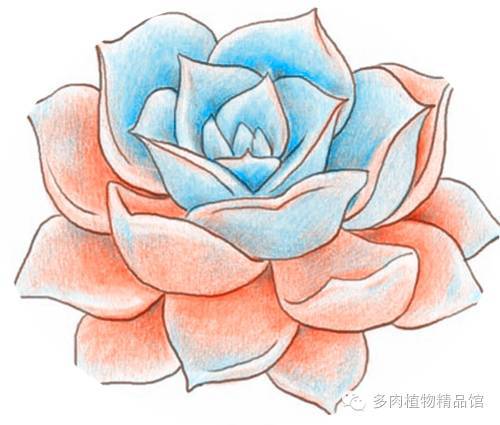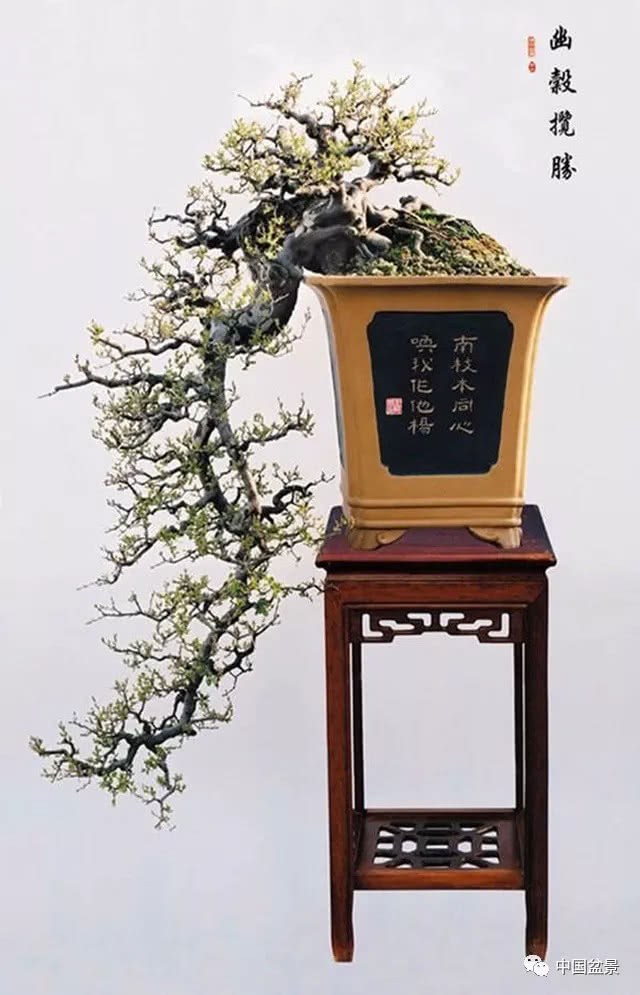When you learn this, you can stand shoulder to shoulder with the sun.

Text
Picture and text: curator
Watering
Here I would like to summarize the watering methods of most varieties, which should also be watered according to the season. For most succulent plants, spring and autumn are both growing seasons. Most plants are like this! Because the temperature is right and the wind is smooth and smooth, they will be very beautiful at this time (not too casually, of course). Under normal circumstances, the frequency of watering is related to the proportion of your soil. The more particles you have, the more frequently you water. At the same time, it is also related to the region and climate. The north may be more diligent, while the south can be a little lazier. With my granularity of 60%, in the case of the Great Emperor, water can properly deal with all meat once a week (yes, I am lazy and treated equally, in fact, I ╮ (╯╰) ╭ once a week). Spring and autumn watering is better in the evening, because the occasional noon sun is still very poisonous.
The watering situation in winter and summer will be based on the growth habits of plants. Succulent plants can be roughly divided into winter type and summer type. As the name implies, the winter type likes to grow in winter and summer, and the summer type likes to grow in summer. Here is a simple table for you. It is classified according to species, some of which may change within genera. I will mark the specific special cases when I introduce this variety. In the future, I will not list what it is one by one. Oh, the winter seed type will give some water in winter, and the summer seed type will not dormancy in summer and can be watered normally. However, it is better to cut off the water as much as possible when it is lower than 5 degrees in winter and higher than 35 degrees in summer. At this time, meat will start the self-protection program and may force dormancy.
Light
Succulent plants mean desert plants, so there is a greater demand for light, because light causes photosynthesis to accumulate nutrients. Normal crassulaceae plants like light very much. The more, the better. As for your favorite jade dew, Vientiane, these 12-volume goblins, they don't like light. All these should be distinguished according to families and genera. But no matter which kind, they all need a certain amount of light, otherwise the flesh will grow ugly and the immunity will decline. Although there are different light requirements for different succulent plants, there is still some common sense to follow. For example, increased light is needed during flowering (usually in spring and also in summer and autumn), astigmatism protection at the beginning of the pot, and shading at the height of summer. to avoid causing damage to plants (I'll tell you all night! ), and try to avoid excessive light after watering and raining.
Many meat friends have responded, saying that there are no exposed conditions at home, and the meat always does not get enough light, and it is very difficult to achieve the so-called "coloring", "steamed buns" and other extremely cute states. Here, uh, I would like to share some of my experience with you. I have used supplementary lights, do not buy the cheap ones that are not easy to use, use regular UVB supplementary lights to provide blue and red light, UVC will burn plants, do not use them, although supplementary lights can provide light to plants that cannot be exposed to a certain extent, but the effect will not be very obvious, it can only be said that it will control the growth, ah, the red edge and so on.
Fertilizer application
Succulent plant as a kind of foliage plant (mainly! Some people still like them, and we will introduce them later. From time to time, it is still very good to give some fertilizer during the growing season. Nitrogen, phosphorus and potassium needed for plant growth are all essential elements for their growth.
[nitrogen] can make plant leaves large and healthy, slow down senescence, strong nutrition and high yield. Nitrogen fertilizer is often used in maintenance to make plants grow rapidly, so if your meat has grown, don't use it, don't color it, and don't use it, right?
[phosphorus] can make the crop metabolism normal, plant development well, and improve the drought resistance and cold resistance of crops. Promote plants to blossom and bear fruit earlier, so those who want to blossom early and replenish the loss of nutrition during flowering can boldly use it. In addition, phosphate fertilizer is recyclable, so be careful not to overuse it, otherwise, la la, I told you.
[potassium] can strengthen the photosynthesis of plants, make the stems tough and resistant to lodging. Promote the development of plant roots and stems, have you noticed! You all like old stakes! This is a fat weapon.
[trace elements] calcium, magnesium, boron, iron, manganese, copper, zinc and molybdenum are all trace elements needed for plant growth. What lobular disease, disease spots, and poor stress resistance all have something to do with these elements, but trace elements are trace elements that are not needed. They can generally absorb enough nutrients from the soil, which is why it is necessary to change the soil. However, if there is a nutrient solution to provide it, there is no need to change soil ~ (it is too much, I have always been so lazy)
Pest control
The most annoying thing you can see in succulent plants is the scale bug, which makes you numb when you think about it. It's white and pink, and I might think he's cute if it wasn't for his bite on my meat. There are roughly two kinds of succulent shellworms, one is the species that is often seen on the leaves, which is not often powdered, and is white and fat. This kind of insect likes to eat the new tender leaves, as well as the new leaves on the foil. These are all the most delicious places on succulent bodies ~ (≧≦) / ~ la la. So be sure to check when you come out of the foil, oh ~ usually pay attention to insect prevention, check whether the leaf heart and leaf back will lie on the stomach of this pesky little creature.
So the best way to deal with scale insects is to catch ╮ (╯╰) ╭ by hand, so that you can check it as clean as possible. (is it a good way to lose weight! Use small tweezers to catch them directly, squeeze them to death, "bang!" Isn't it awesome! Of course, for those who do not have time, you can use the god of protecting flowers, Mutewang, carbofuran, Tachongdan, and the little green medicine Barra. Well, yes, their order is the increasingly poisonous ╮ (╯╰) ╭.
Another kind of scale insect is called "root powder shell worm", they are dormant in the root, will produce fine sticky "net" like thing stick to the root, not! Chang! Ugh! Heart! If you find them, then courtesy! Hi! you! In the future, you will be entangled with this thing for the rest of your life, because there is basically no way to destroy them. When you turn the basin and find the root powder beetle, you first need to discard the original soil immediately! I don't recommend the method of reuse. You can get rid of worms and you can't get rid of eggs! Clean all the roots of the plant, then trim the roots, soak them in clean water for half an hour, then wash and dry for 1-2 days, dry them out and put them back into the basin. The original flowerpot should also be re-cleaned, and it is best to wash it with a brush 360 degrees. Of course, this is a very troublesome method. If there are too many at home, you need to use medicine. So at present, the most effective drugs are "scale must be treated", "quick attack", "Bayer small green medicine", "carbofuran" and Barabara (actually the same as before) can kill worms, but the eggs cannot be killed, so be prepared to fight them to the end.
Misunderstanding: carbendazim and potassium permanganate can't kill worms.
In addition to shell insects, there are also numerous insect sources of red spiders, ants, aphids, and Barabara. These guys are easier to deal with, and insecticides such as buflurate can be dealt with. In addition, there is an annoying thing called Xiao Hei Fei, which I have never seen before, but my meat friend said that "Xiao Hei Fei goes to hell" is very easy to use.
Sterilization
The general manifestations of bacterial damage are black rot, black spots, black spots, and so on, of which black rot is the most common, and it is also the most explosive, which may be a sharp weapon to be solved overnight! The germ is said to be Fusarium. I'm not sure if there are any concurrent bacteria.
The main method of prevention and control is not to keep the whole tide, especially the soil. Usually watering should be controlled, and the soil must not accumulate water! If infected plants are found, first, they should be isolated, second, they should be treated, beheaded, and leaves should be broken to protect the species. Especially for precious varieties, the broken leaves should also pay attention to see if there is any infection in the wound, and be isolated for a period of time to observe! Think of the Romeo I solved overnight.
The article is organized by the succulent plant boutique, the copyright belongs to the original author, some articles can not find out the source, marked as the source network, if there is any infringement, please contact us immediately, we will deal with it in time.
- Prev

A brief discussion on the watering methods of raw stone flowers under various conditions
Text: network coordinates Foshan, subtropical monsoon climate, this article only represents my point of view, absolutely can not be used throughout the country, please be careful to refer to watering and soil allocation can not be said separately. My soil distribution is as follows, particle peat ratio: sowing.
- Next

Tree design and manufacture of cliff bonsai
Cliff bonsai tree design and production pictures, text | Red Leaf Bonsai (this article is selected from "Red Leaf Bonsai", copyright belongs to the original author) Cliff Bonsai originated from the inverted pine on the Wanzhang cliff, its roots exposed claws, danced by the strong wind, violent.
Related
- Wuhan Hospital Iron Tree Blooming Result Was Instantly Frightened by the Gardener Master
- Which variety of camellia is the most fragrant and best? Which one do you like best?
- What is the small blue coat, the breeding methods and matters needing attention of the succulent plant
- Dormancy time and maintenance management of succulent plants during dormancy
- Minas succulent how to raise, Minas succulent plant pictures
- What are the varieties of winter succulent plants
- How to raise succulent plants in twelve rolls? let's take a look at some experience of breeding twelve rolls.
- Attention should be paid to water control for succulent plants during dormant period (winter and summer)
- Watering experience of twelve rolls of succulent plants
- Techniques for fertilizing succulent plants. An article will let you know how to fertilize succulent plants.

